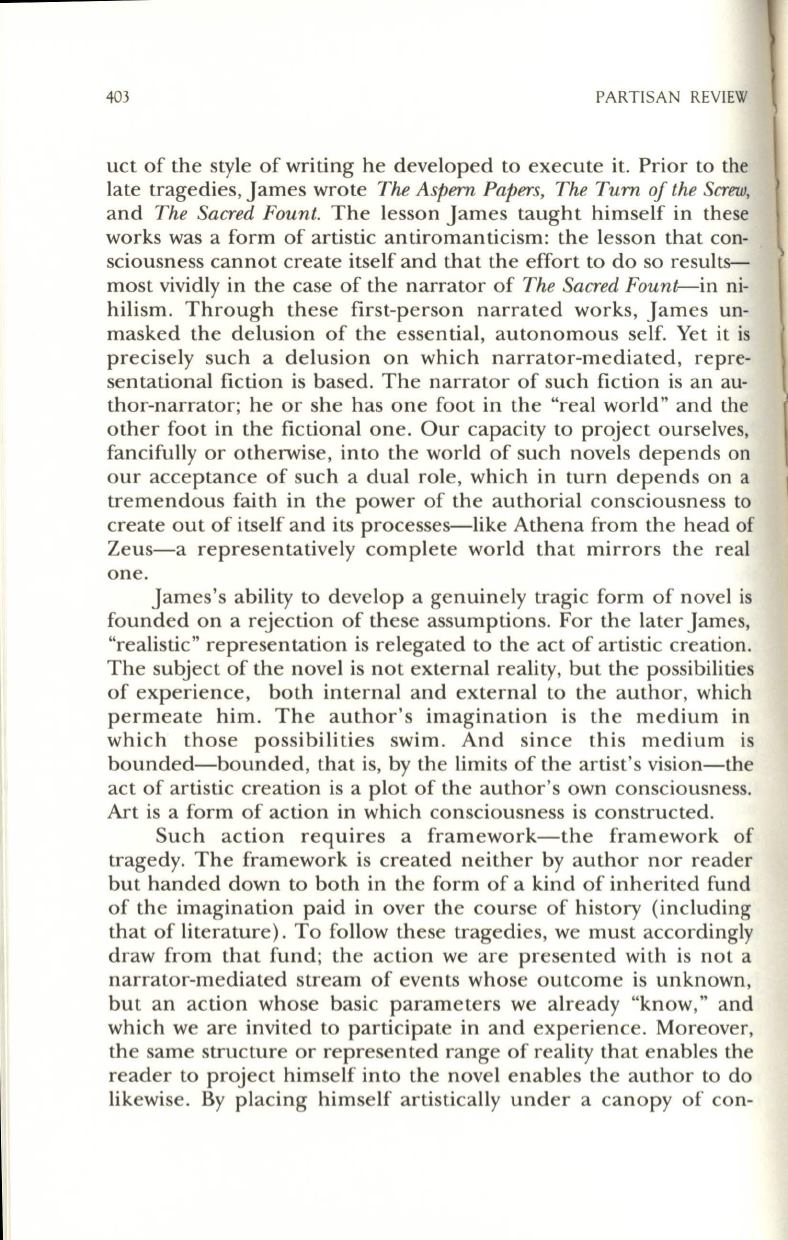
403
PARTISAN REVIEW
uct of the style of writing he developed to execute it. Prior to the
late tragedies, James wrote
The Aspern Papers, The Tum of the Screw,
and
The Sacred Fount.
The lesson James taught himself in these
works was a form of artistic antiromanticism: the lesson that con–
sciousness cannot create itself and that the effort to do so results–
most vividly in the case of the narrator of
The Sacred Fount-in
ni–
hilism. Through these first-person narrated works, James un–
masked the delusion of the essential, autonomous self. Yet it is
precisely such a delusion on which narrator-mediated, repre–
sentational fiction is based. The narrator of such fiction is an au–
thor-narrator; he or she has one foot in the "real world" and the
other foot in the fictional one. Our capacity to project ourselves,
fancifully or otherwise, into the world of such novels depends on
our acceptance of such a dual role, which in turn depends on a
tremendous faith in the power of the authorial consciousness to
create out of itself and its processes-like Athena from the head of
Zeus-a representatively complete world that mirrors the real
one.
James's ability to develop a genuinely tragic form of novel is
founded on a rejection of these assumptions. For the later James,
"realistic" representation is relegated to the act of artistic creation.
The subject of the novel is not external reality, but the possibilities
of experience, both internal and external to the author, which
permeate him. The author's imagination is the medium in
which those possibilities swim. And since this medium is
bounded-bounded, that is, by the limits of the artist's vision-the
act of artistic creation is a plot of the author's own consciousness.
Art is a form of action in which consciousness is constructed.
Such action requires a framework-the framework of
tragedy. The framework is created neither by author nor reader
but handed down to both in the form of a kind of inherited fund
of the imagination paid in over the course of history (including
that of literature). To follow these tragedies, we must accordingly
draw from that fund; the action we are presented with is not a
narrator-mediated stream of events whose outcome is unknown,
but an action whose basic parameters we already "know, " and
which we are invited to participate in and experience. Moreover,
the same structure or represented range of reality that enables the
reader to project himself into the novel enables the author to do
likewise. By placing himself artistically under a canopy of con-


